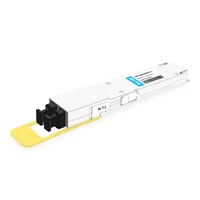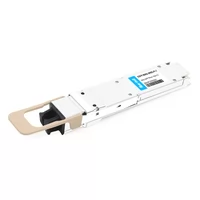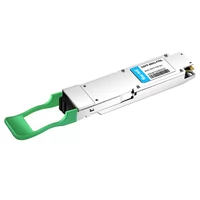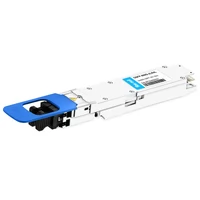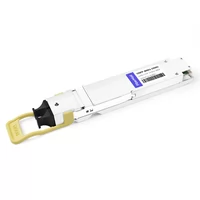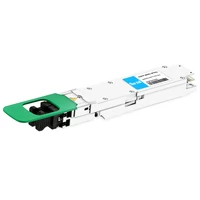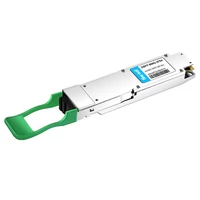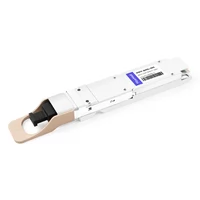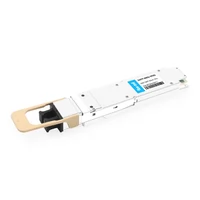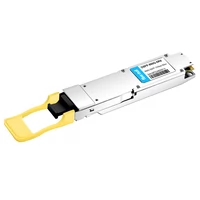The advancement in the usage of data traffic in today’s world dominates the technological industry and meets the need for high-speed connections. OSFP 800G Optical Transceiver is among the elites in transforming data center performance to another page. This article examines the OSFP 800G’s design features and distinguishing aspects, focusing on its technical properties, field advantages, and contribution to the enhancement of network assets in the context of perspective demand. The need and market for such an advanced optical transceiver would bring striking changes as businesses endeavor to meet their mounting data requirements. In this context, the OSFP 800G will help businesses improve their networking techniques and dynamically integrate considerable scalability and continuity along with the processes, ensuring efficiency in the constantly evolving technology world.
Table of Contents
ToggleWhat is an OSFP 800G Optical Transceiver?
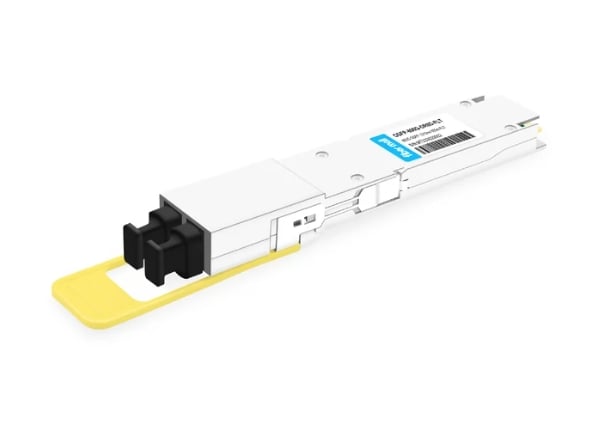
The OSFP 800G Optical Transceiver is built for the 21st-century technology with data transmission capabilities of up to 800 gigabits per second and meant for use in modern data centers. It functions to improve the network bandwidth with minimal energy usage. Being a hot-swappable interface, it enables smooth upgrades and scalability which is crucial for today’s network infrastructures.
Understanding the OSFP Form Factor
The design of the OSFP (Octal Small Form-factor Pluggable) aptly meets the high data rates of 800G optical transceivers. It has eight electrical lanes which deliver 100G each, bringing the total throughput of the module to a steep 800G. The overall length, width and height of OSFP are 100.4mm, 22.58mm and 13.0mm respectively which makes it compatible with the design of next generation switches which would not bother performance while taking into consideration saving much space on the device.
As for the power usage, maximal consumption with some reserves was raised for the OSFP 800G to 15 watts per module due to improved thermal management and employing advanced cooling techniques. Static power waste is cut to a minimum whilst dynamic power waste efficiency is maximized as the OSFP supports dynamic scaling. The hot-swappable capabilities of the OSFP allow simple replacement and upgrade for ease of maintenance with no effect on live network usage. Moreover, one should already talk about forward and backward compatibility and its applications, which make provision for connection to existing and future systems. Any operator using the OSFP offers perspective widening of available space for the expansion performance of a network, which will always meet growing requirements of the area of usage.
Key Features of the 800G OSFP Optical Transceiver
The high 800G OSFP Optical Transceiver is intended for the advanced networking requirements of the data center and has a number of benefits, such as:
- Increased volume of transmitted data: Something that makes it possible to ensure an 800 Gbps bandwidth through eight communication lines – four lines delivering 100 Gbps each.
- Power Efficiency: The maximum demand is positioned with a limit of 15 watts per module with the help of proper cooling and adaptive adjustable power for dynamic workloads.
- Design that saves space: Measuring 100.4mm x 22.58mm x 13.0mm, it presents high performance in limited spaces that are typical of modern switch designs.
- Compatibility: The device allows for both forward and backward compatibility with existing structures as well as with all devices in the future.
- Hot – Swappable: One of the most useful features provides easy maintenance and forehand network upgrades while minimal performance disruptions are experienced.
- Tighter Thermal management: Strong cooling strategies are employed to minimise thermal difficulties thereby enabling high reliability under high load operations.
- Scalability: This is a scalable product that is useful in compositions with all growing bandwidth routers in the era of data computing.
Utilizing these features enables the data centers to improve the performance, economizing operational costs and endurance in high network scene.
How the OSFP Optical Module Enhances Data Centers
By incorporating its data bandwidth capabilities of 800 Gbps, the OSFP Optical Module improves the performance of data centers in terms of future data traffic requirements. Its power-efficient design reduces energy losses and increases reliability, which is important in the context of cost control and operational efficiency in data centers. The module has a small footprint, allowing for high-density deployment, meaning that there will be more connections in the same physical footprint, hence maximizing space and performance. It is also backward compatible with the existing systems and forward compatible with the new technologies. This implies less structural alteration; hence, less time and resources are wasted. These factors combined improve the operations of data centers by providing cost-effective, flexible, and green networking solutions, which are required to handle the complexity of the modern digital environment.
How Does an OSFP 800G Transceiver Benefit Data Centers?
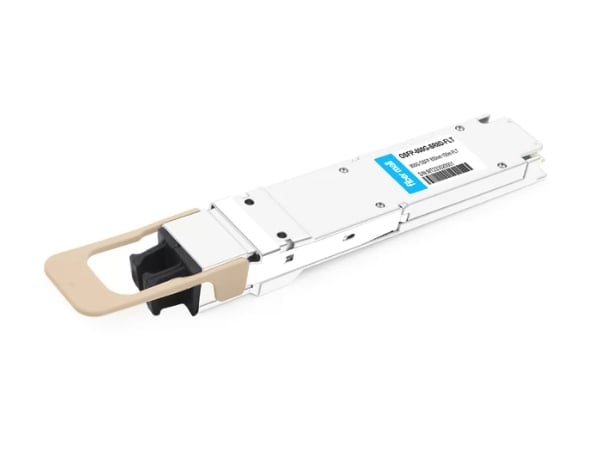
Maximizing Connectivity and Bandwidth in Data Center Networks
The OSFP 800G transceiver provides quick data transfer that enables the improvement of data centers in covering the growing demand for connectivity. It improves on much bandwidth due to higher data rate transfer techniques over long channel lengths standard within the network. Due to the compact design of the transceiver, more ports are possible, thus enabling great space utilization of existing hardware. Further, its efficient use of power leads to energy savings, thus lowering the operating costs of data center facilities.
Reducing Power Consumption with High-Speed Optical Modules
Data centers are greatly helped by the OSFP 800G transceiver and other optical modules by reducing overall energy usage. The design of the higher-speed modules includes features that enhance the performance of the transceiver while minimizing energy consumption. One example is the integration of low-power silicon photonics, where the transceiver consumes relatively less power. According to recent studies, modules based on silicon-photonic can help reduce power usage by 30% as opposed to traditional approaches that use copper.
Moreover, the transceivers also utilize novel cooling designs that attempt to reduce the thermal load, thereby allowing the cooling system to operate without much energy. Data center operators can observe that operational energy costs have been reduced after the installation of the high-speed optical modules, leading to an improvement in energy efficiency. In this sense, the adoption of these advanced technologies will enable the data centers to attain the set sustainability targets, reengineer resource usage, and lower their carbon emissions in compliance with any worldwide environmental constraints.
Scalability and Flexibility: From 100G to 1.6T
It is these contemporary high-speed optical modules that allow for significant scalability and flexibility in data centers transitioning from 100G to 1.6T. As network demand increases, demand will allow for these modules to upgrade bandwidth without disruptively upgrading infrastructure. They are, however, backward compatible, so older systems will be upgraded on a need basis with new technologies. Such flexibility is imperative for evolutionary upgrades of data center operations as technology development progresses at a high pace. Such new technologies in optics assist operators in enhancing the performance and efficiency of resource allocations in order to improve network capacity and usage.
How Do OSFP 800G and QSFP-DD800 Compare?
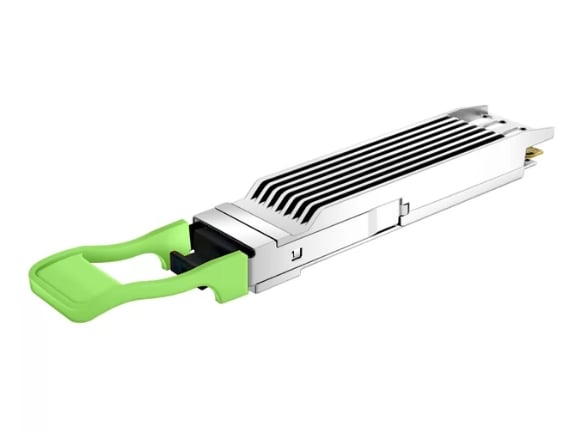
Form Factor Differences: OSFP vs. QSFP-DD800
The OSFP (Octal Small Form Factor Pluggable) and QSFP-DD800 (Quad Small Form Factor Pluggable Double Density) are two advanced form factors designed to meet the rigorous demands of high-speed data transmission. Here are the key differences and specifications for each:
Size and Dimensions:
- OSFP: The Octal Small Form Factor Pluggable or OSFP component has larger dimensions of about 100.4 mm in length, increasing its capacity for thermal management.
- QSFP-DD800: Featuring dimensions of about 89 mm in length, the Quad Small Form Factor Pluggable Double Density or QSFP-DD800 is best for use in network environments which require dense space design.
Cooling Requirements:
- OSFP: This design allows for enhanced heat dissipation and as such, proficient thermal management can be achieved with no or low cooling infrastructure requirements.
- QSFP-DD800: Due to its reduced form factor, this component uses high heat solutions including active airflow management which can sometimes cause thermal densities to be high.
Pin Configuration and Electrical Interfaces:
- OSFP: This component has a pin configuration of about sixty pins, allowing signals and power to be robust and strong enough to support more strenuous applications.
- QSFP-DD800: The component has a total of 76 pins to provide for additional data lanes and power features that are important for double density performance.
Compatibility and Backward Support:
- OSFP: Lack of compatibility issues is apparent due to the fact that this design accommodates future expansion and trends.
- QSFP-DD800: This utilizes the advantages of previous QSFP form factors with backward compatibility, enabling smooth integration and transition for existing infrastructure.
Power Consumption:
- OSFP: In most cases such interfaces can support power consumption of the order of 15 watts to take care effectively high speed data processing requirements.
- QSFP-DD800: These are also usually designed to handle up to 18 watts for higher powering to cope with increased data lane density and performance levels.
As both OSFP and QSFP-DD800 have their own characteristics optimally solved for the particular requirements of the data center – size, thermal management, interface compatibility, power consumption, and so on – all the primary parameters also determine the right mode of construction for the high-speed optical networks.
Performance Capabilities: Which is Faster and More Efficient?
In assessing the comparative performance characteristics of the OSFP and the QSFP-DD800 modules, both can be considered to deliver high speed vital for contemporary optical networks. OSFP has data rates of 400 Gbps, which might be further increased to about 800 Gbps in the near future. This makes it suitable for applications where greater throughput coupled with advanced cooling technologies is preferred, thanks to its shape. In contrast, the QSFP-DD800 was developed for double-density data applications, natively supporting 800 Gbps and allowing for more power to control more data traffic effectively. Although both perform well, the QSFP-DD800 is superior in bandwidth-efficient and future-proof design environments.
Choosing Between OSFP and QSFP-DD800 for Your Data Center
Both technical and operational specifications must be addressed when selecting between OSFP and QSFP-DD800 to promote the performance and compatibility of the data center infrastructure. Here’s all the supportive crucial data here:
Form Factor and Size:
- OSFP: A large form factor that utilizes sophisticated cooling systems that are beneficial to systems with higher support throughput.
- QSFP-DD800: Designed to have a double-density configuration which is ideal for maximizing the space available in the data center for the compact architectures.
Power Consumption:
- OSFP: Normally, it is built to handle power management of not more than 15 watts while providing high speed performance.
- QSFP-DD800: Supports power usage of up to 18 watts hence enhancing the data processing abilities.
Data Rate Capabilities:
- OSFP: Current provisions of up to 400 Gbps, further provision of upgrades to reach 800 Gbps are being anticipated to cover the growing data requirements.
- QSFP-DD800: Does not need any upgrades since it supports 800 Gbps from the beginning hence serving well the bandwidth and speed requirements of the environment.
Compatibility:
- OSFP: Increases system capabilities by providing new features to existing networks as it has the ability to be used in most configurations.
- QSFP-DD800: Improved capabilities are introduced in newer double-density structures as they were made solely for integration with those structures.
Thermal Management:
- OSFP: Its dimensions allow it to implement advanced cooling techniques which ultimately improve thermal performance.
- QSFP-DD800: This unit is smaller in size but is designed to operate at higher workloads while enabling adequate heat dissipation.
In light of these peculiar aspects, data center owners can target the most suitable high-speed optical transceiver module that meets their functional specifications together with expansion capabilities in the future.
What are the Optical and Interconnect Technologies Behind OSFP 800G?
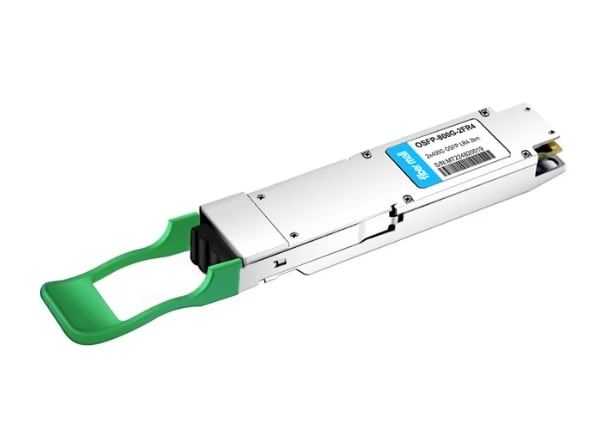
The Role of PAM4 in Enhancing Signal Quality
PAM4 is an abbreviation for pulse amplitude modulated system, which employs four voltage level instances. This method keeps the information constant, doubling the amount of data delivered within the same bandwidth. The strategy involves changing the modulation to 2-bit, which is more advanced than the one-bit NRZ, where only one bit of data can be carried at a time. As a result, more data can be transmitted through a wider area. This makes PAM4 particularly suited for high-speed OSFP or QSFP-DD800 optical transceivers because it minimizes signal loss over longer transmission distances and resolves bandwidth restrictions.
Exploring SR8 and DR8 Modes
SR8 and DR8 modes are unique operating configurations in optical transceiver modules that allow for rapid data transmission. Terminology changes slightly with greater distance, for example, SR8 for short-reach, which sends and receives data over short distances using economical, low-powered, and lower-cost multimode opt fiber, which is effective for inter-datacenter link applications. The opposite is true for DR8, which stands for Data Rate 8, as it was designed for long-reach applications, and the use of single-mode optic fiber has increased its transmission range while ensuring high data integrity. Such modes can work together with PAM4 modulation to improve performance while responding to the multi-faceted needs of the networks, therefore allowing high-speed optical networks operability and capability at a larger scale than one would find with its repetitive architectures.
Impact of 1310nm and 850nm Wavelengths on Performance
The wavelength used for transmission in optical fiber systems has a pronounced effect on their performance, and 1310 nm and 850 nm are two of the most popular options. Wavelengths of approximately 850 nm are typically found with multimode fiber systems as this is a low-cost option for short-range data transmissions; it is often found in data centers and office space for Ethernet/ Fiber Channel applications. This wavelength is suited for VCSELs and usually provides effective data communications for several hundred meters. Conversely, the 1310 nm wavelength is ideal for single-mode fiber applications due to its better attenuation, and it is useful for transmission over greater distances, thus qualifying for use in metropolitan or long-haul networks. There has to be major considerations when making a comparison between the two wavelengths, this is because they are critical in system design, costs, signal loss, data rate capabilities and the overall performance of the network depending on the application.
How to Implement OSFP 800G in Existing Data Center Networks?
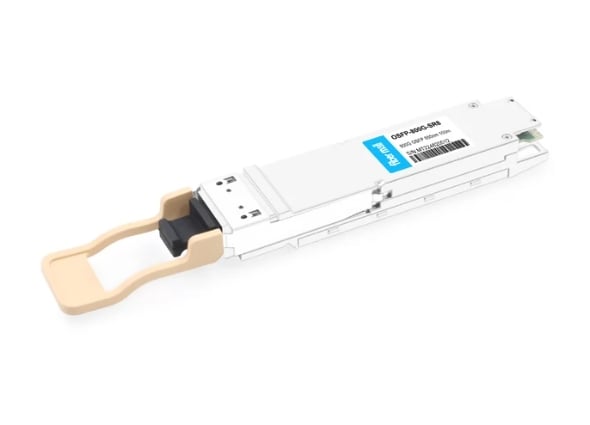
Integrating with DAC and MPO-12 Connectors
A well-thought-out network design, which employs Direct Attach Copper (DAC) cables and the use of Fiber Multiple Fiber Optic MTP/MPO-12 connectors, will make it easier to integrate a compatible 800G data center module interface into existing data center cabling architecture. In this case, DAC cables provide a low-cost, low-power option for short-range interconnects with low latency. Their ‘plug and play’ nature enables their easy installation in situations where high bandwidth is required. On the other hand, MPO-12 connectors can transmit 12 parallel optical signals, thus utilizing very compact physical footprints in multi-fiber optic connections. The connectors are capable of maintaining the integrity of the signal, which is crucial to ensure the reliable operation of 800G OSFP infrastructures where resource scalability and network redundancy are targeted.
Best Practices for Transition from 400G to 800G
Switching from 400G to 800G network capabilities will require adequate planning and implementation to achieve maximum efficiency and performance while reducing disruption. Some best practices that need consideration include the following:
- Infrastructure Assessment and Compatibility Check: The very first step is to evaluate the existing infrastructure and consider the addition of the 800G components. It is essential to cross-check the availability of the energy sources, cooler, and the required physical space since there will be more energy and thermal management required for higher speed networks. Also, do simulations or pilot tests to predict bottlenecks or integration issues.
- Incremental Upgrade Strategy: Begin using a gradual upgrading technique to allow the network to continue functioning, and to make it easier to troubleshoot. Use the least important parts of the network first which the team learns to use and later works with more critical ones as 800G becomes a more essential part of the directed paths.
- Training and Knowledge Update: It is essential that the personnel is fully trained on all new 800G equipment and systems. This necessitates becoming familiar with the intricacies of high level modulation, PAM4, which is frequently employed in 800G to enhance data rates on the same bandwidth as that of 400G.
- Improved Network Monitoring: Because of greater data rates, there is a need for improved network monitoring and management solution to be implemented. Advanced analytics tools should be adopted so that problems such as packet loss or signal degradation can be anticipated and performance remains at an optimal level.
- Enable vendor engagement as early as the transition phase. Their assistance with details on specific device attributes and interoperability features and available device software updates or patches if necessary can prove to be valuable support.
- Cost-Benefit Analysis: Assess the new 800G equipment’s costs vs. benefits in terms of expected performance metrics. Investments may be justified by improvements in latency, lower power requirements, better data throughput, and so on.
Adhering to these best practices will make the changeover easier, but more importantly, they will ensure that a more strong and resilient network infrastructure is implemented that is capable of meeting the future demands of data in an efficient manner.
Utilizing the OSFP MSA Guidelines
The OSFP MSA sets out technical standards that will help support the next generation of 800G networking solutions. It seeks to provide common optical module physical and interface specifications to enable interoperability between various equipment manufacturers. Following these guidelines allows for straightforward equipment integration and procurement, as well as the possibility of upgrading the network infrastructure in the future. In addition, OSFP MSA compliance ensures compliance with the required industry standards, improves upgrade processes, and facilitates the use of high-efficiency power modules, which are important in enhancing network capabilities at minimal cost and thermal management.
Reference Sources
Frequently Asked Questions (FAQs)
Q: What is an OSFP 800G optical transceiver module?
A: An OSFP 800G optical transceiver module is an integrated data communication device which is state of art and operating with high capacity such devices. It supports 800Gbps and was designed using advanced technologies which are most suited for large scale data centers and Telco networks.
Q: How is the OSFP 800G transceiver related to the QSFP-DD form factor?
A: QSFP-DD (Quad Small Form Factor Pluggable Double Density) is another transceiver form factor that can be designed to support ethernet connections of up to 800G. Even though they serve different purposes, OSFP and QSFP-DD are the most widely featured form factors found in developed data networking devices due to their capabilities of providing high bandwidth with low latency.
Q: How do SMF and MMF differ in terms of their use in optical transceivers?
A: For long distance data transmission that is extends to a distance of more than 10km, SMF (Single-mode Fiber) is used. MMF (multi-mode Fiber) on the contrary is mostly used for shorter distances typically within the range of 50m to 500m and are usually low cost optics. Each has particular applicability in data centers depending on distance needed and their respective performance.
Q: In this context, can you describe a breakout cable?
A: A breakout cable is a cable that changes connections with a single high capacity transceiver to many lower capacity connectors. For example, it converts the bandwidth of an 800G transceiver into multiple 100g or 200g connections which allows easy and optimal configurations of the network.
Q: What is the contribution of PAM4 in 800G OSFP transceivers?
A: PAM4 is Pulse Amplitude Modulation with 4 levels that enhance data transfer by making each symbol represent two bits. This technology is essential when trying to use 800G transceivers to transfer large amounts of data effectively whilst consuming low power and preserving the high fidelity of the signal over distances of 2km or more.
Q: What is the importance of the DDM feature in optical transceivers?
A: DDM is a feature that enables active monitoring of selected performance parameters of an optical transceiver such as temperature, voltage and optical power. This feature is very important in enhancing dependability and assists in diagnosis from operational data that is obtained.
Q: In what regard does the specification OSFP DR8 have deviations from other standards?
A: As per the specification, the OSFP DR8 manages an 800G transceiver with 8 channels, with each able to transmit 100Gbps data traffic. It is applicable for connections to a maximum 500m distance over SMF in a way that enables transferring large amounts of data in less time and more efficiently.
Q: Why is a dual MPO-12 connector useful for interconnection with 800G transceivers?
A: The use of Dual MPO-12 connectors in 800G transceivers enhances options for interconnections since they deliver higher density while at the same time allowing for fewer and streamlined cables. It will be efficient space wise inside datacenters since these types of connectors are ideal for the high data rates resulting from high-bandwidth needs in modern day applications.
Q: How do 800G QSFP-DD800 modules work in a data center setup?
A: The modules are used in data centers for the purpose of supporting ultra-high bandwidth applications of which are highly flexible and scalable in nature. In particular, these modules can deal with the processes for large volumes of data and its transmission which are crucial for cloud services, big data analytics, and streaming services.
Related Products:
-
 OSFP-800G-DR8D-FLT 800G-DR8 OSFP Flat Top PAM4 1310nm 500m DOM Dual MTP/MPO-12 SMF Optical Transceiver Module
$1199.00
OSFP-800G-DR8D-FLT 800G-DR8 OSFP Flat Top PAM4 1310nm 500m DOM Dual MTP/MPO-12 SMF Optical Transceiver Module
$1199.00
-
 OSFP-800G-SR8D-FLT OSFP 8x100G SR8 Flat Top PAM4 850nm 100m DOM Dual MPO-12 MMF Optical Transceiver Module
$650.00
OSFP-800G-SR8D-FLT OSFP 8x100G SR8 Flat Top PAM4 850nm 100m DOM Dual MPO-12 MMF Optical Transceiver Module
$650.00
-
 OSFP-800G-FR8L OSFP 800G FR8 PAM4 CWDM8 Duplex LC 2km SMF Optical Transceiver Module
$3000.00
OSFP-800G-FR8L OSFP 800G FR8 PAM4 CWDM8 Duplex LC 2km SMF Optical Transceiver Module
$3000.00
-
 OSFP-800G-2LR4L OSFP 2x400G LR4 PAM4 CWDM4 Dual duplex LC 10km SMF Optical Transceiver Module
$2000.00
OSFP-800G-2LR4L OSFP 2x400G LR4 PAM4 CWDM4 Dual duplex LC 10km SMF Optical Transceiver Module
$2000.00
-
 OSFP-800G-DR8D 800G-DR8 OSFP PAM4 1310nm 500m DOM Dual MTP/MPO-12 SMF Optical Transceiver Module
$850.00
OSFP-800G-DR8D 800G-DR8 OSFP PAM4 1310nm 500m DOM Dual MTP/MPO-12 SMF Optical Transceiver Module
$850.00
-
 OSFP-800G-2FR4L OSFP 2x400G FR4 PAM4 1310nm 2km DOM Dual Duplex LC SMF Optical Transceiver Module
$1200.00
OSFP-800G-2FR4L OSFP 2x400G FR4 PAM4 1310nm 2km DOM Dual Duplex LC SMF Optical Transceiver Module
$1200.00
-
 OSFP-800G-2FR4 OSFP 2x400G FR4 PAM4 CWDM4 2km DOM Dual CS SMF Optical Transceiver Module
$1500.00
OSFP-800G-2FR4 OSFP 2x400G FR4 PAM4 CWDM4 2km DOM Dual CS SMF Optical Transceiver Module
$1500.00
-
 OSFP-800G-SR8 OSFP 8x100G SR8 PAM4 850nm MTP/MPO-16 100m OM4 MMF FEC Optical Transceiver Module
$650.00
OSFP-800G-SR8 OSFP 8x100G SR8 PAM4 850nm MTP/MPO-16 100m OM4 MMF FEC Optical Transceiver Module
$650.00
-
 OSFP-800G-SR8D OSFP 8x100G SR8 PAM4 850nm 100m DOM Dual MPO-12 MMF Optical Transceiver Module
$650.00
OSFP-800G-SR8D OSFP 8x100G SR8 PAM4 850nm 100m DOM Dual MPO-12 MMF Optical Transceiver Module
$650.00
-
 OSFP-800G-DR8 OSFP 8x100G DR PAM4 1310nm MPO-16 500m SMF DDM Optical Transceiver Module
$900.00
OSFP-800G-DR8 OSFP 8x100G DR PAM4 1310nm MPO-16 500m SMF DDM Optical Transceiver Module
$900.00

